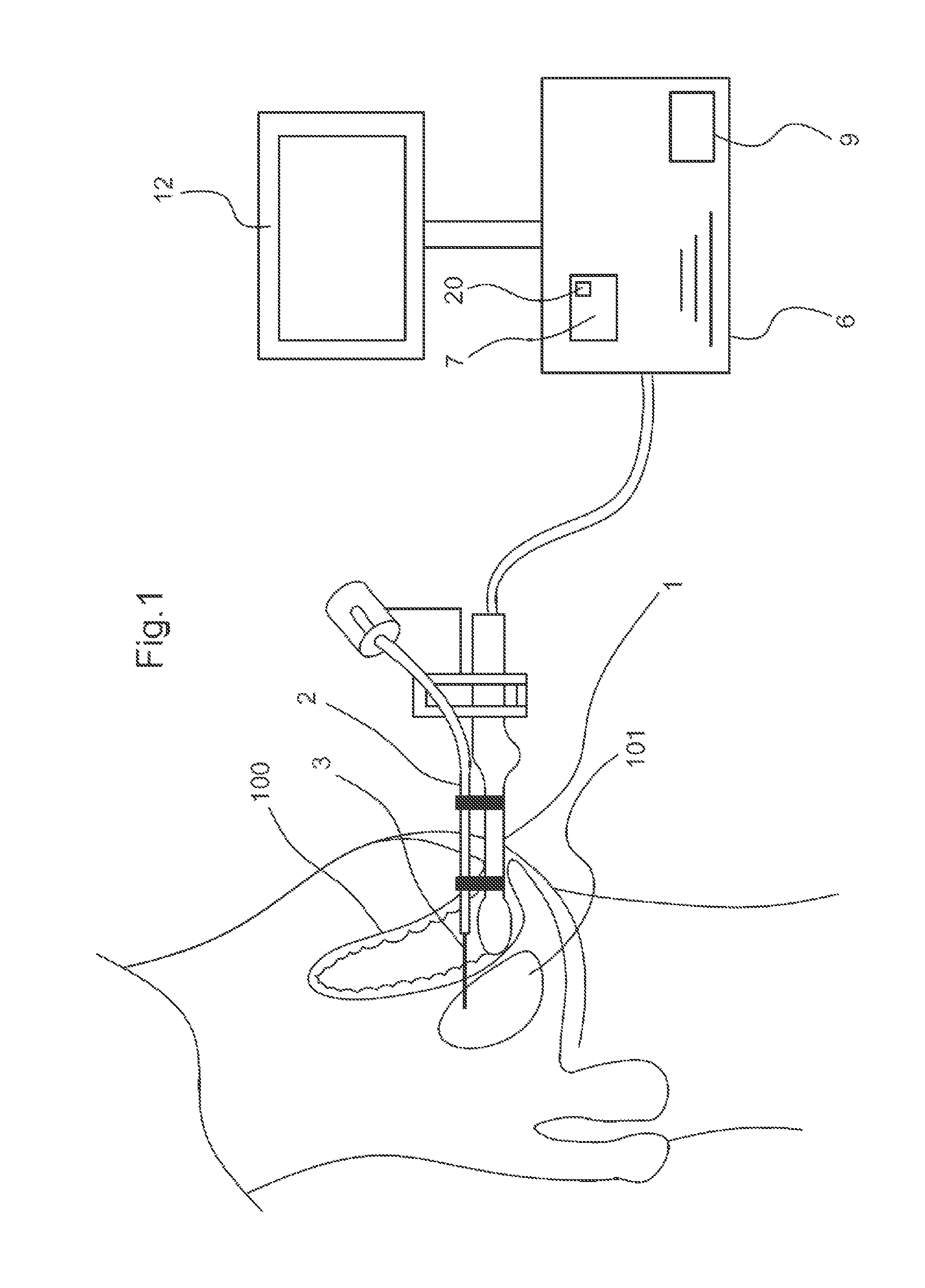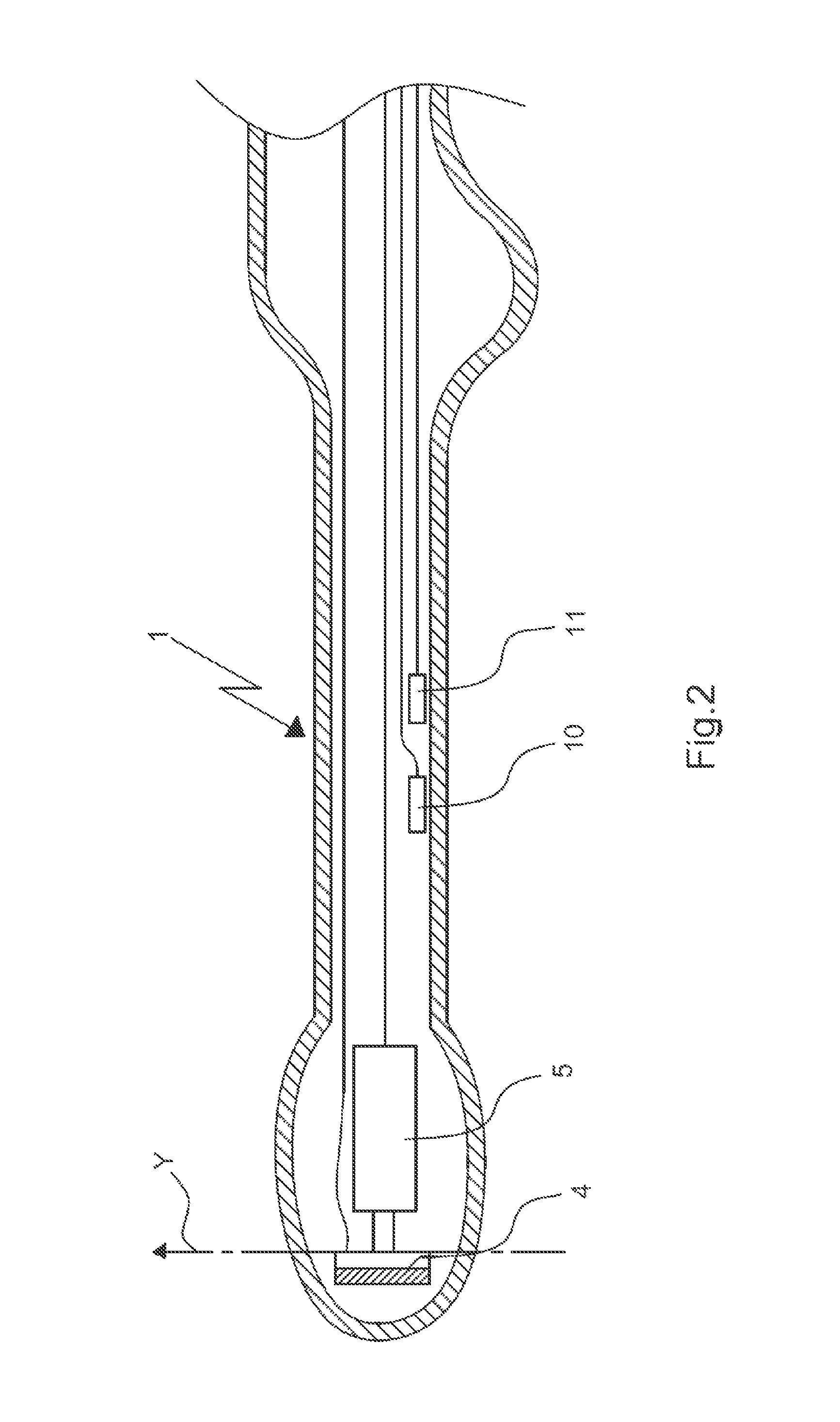Device for guiding a medical imaging probe and method for guiding such a probe
a technology for medical imaging and probes, applied in the direction of sensors, catheters, diagnostics, etc., can solve the problems of difficult to accurately guide devices, etc., to speed up the process of image acquisition, improve the accuracy of positioning of the probe relative to the prostate, and improve the effect of accuracy
- Summary
- Abstract
- Description
- Claims
- Application Information
AI Technical Summary
Benefits of technology
Problems solved by technology
Method used
Image
Examples
Embodiment Construction
[0039]The invention is illustrated in its application to a prostate biopsy. This application is, of course, not limiting. Furthermore, the invention is illustrated in its application to a needle holder. This application is also not limiting.
[0040]Referring to FIG. 1, the guide device according to the invention comprises a medical imaging probe 1, which is illustrated as being inserted into the rectum 100 of a patient. Here, the guide device is intended to guide the probe 1 in proximity to the prostate 101 of the patient. The probe 1 comprises means for acquiring images of the prostate 101.
[0041]According to one particular embodiment, the probe 1 is rigidly connected to a medical instrument, here comprising a needle holder 2 for carrying out a biopsy of the prostate 101. The needle holder 2 holds a needle 3. Since the probe 1 is fixed to the needle holder 2, the position of the probe 1 relative to the needle holder 2 is known.
[0042]The guide device comprises a control unit 6, to whic...
PUM
 Login to View More
Login to View More Abstract
Description
Claims
Application Information
 Login to View More
Login to View More - R&D
- Intellectual Property
- Life Sciences
- Materials
- Tech Scout
- Unparalleled Data Quality
- Higher Quality Content
- 60% Fewer Hallucinations
Browse by: Latest US Patents, China's latest patents, Technical Efficacy Thesaurus, Application Domain, Technology Topic, Popular Technical Reports.
© 2025 PatSnap. All rights reserved.Legal|Privacy policy|Modern Slavery Act Transparency Statement|Sitemap|About US| Contact US: help@patsnap.com



